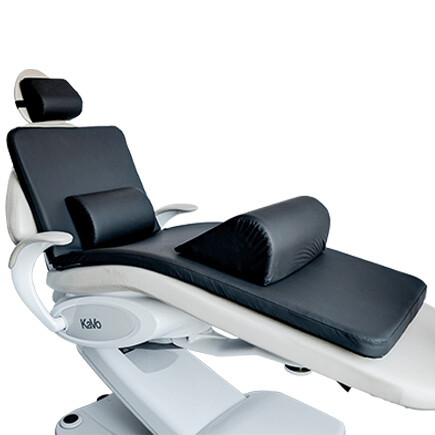What Causes Arm Pain in Dental Providers?

Dental hygienists and dentists are exposed to prolonged and awkward postures that can lead to painful arm and shoulder conditions. These professionals often work for extended periods, lean over patients, and use their hands repeatedly to probe hard surfaces. The repetitive nature of these tasks can lead to various arm-related issues, which can lead to musculoskeletal issues, shortened careers, and many other issues.
What are the major causes of arm pain in dentists? Because of the nature of the work dental providers do on a daily basis, these are the major causes.
Repetitive Motion
Repetitive motion injury, or cumulative trauma disorder, is a frequent cause of arm pain in dentists and hygienists. It’s caused by extended periods of similar motions that stress the body’s muscles, ligaments, and joints. Specific dental procedures, such as removing soft or decayed areas of teeth, require repetitive scrubbing motions that can lead to hand and wrist pain. Other dental and dental hygiene procedures, like drilling and filling teeth, often require using specific hand postures that can lead to repetitive motion injuries.
Hand and wrist strain, or carpal tunnel syndrome, is another frequent cause of arm pain in dentists and hygienists. It’s caused by repetitive motions which run through the hand and wrist area. Both dental hygienists and dentists are at risk for hand and wrist strain since they spend a lot of time scrubbing teeth and working with small tools. Scrubbing teeth with a stiff brush while bending the wrist backward often causes hand and wrist strain in dental hygienists.
Prolonged Positioning
Prolonged positioning is another frequent cause of arm pain in dentists and hygienists. It happens when you have to maintain an unnatural posture for an extended period. Some dental procedures, such as placing fillings and removing build-up, require you to lean over a patient’s mouth and work from the floor. This prolonged positioning can be very taxing on the back and arm muscles. Some dental procedures, such as placing implants, require you to maintain an awkward posture for long periods. This type of prolonged positioning can also lead to arm pain and discomfort.
Carpal Tunnel Syndrome
Carpal tunnel syndrome is another frequent cause of arm pain in dentists and hygienists. It’s caused by a pinched nerve in the hand and wrist area. The common causes of carpal tunnel syndrome in dentists and hygienists are prolonged positioning, poor ergonomics, and excessive hand and wrist strain.
Tendonitis
Tendonitis is another frequent cause of arm pain in dentists and hygienists. It’s caused by the overuse of muscles and tendons near the elbow joint. Excessive scrubbing, gripping, and twisting motions in the hands often lead to tendonitis in dental professionals. Wrist tendonitis is one of the dentists’ most common causes of arm pain.
Bursitis
Bursitis, or inflammation of the shoulder joint bursa, is another frequent cause of arm pain in dentists and hygienists. It’s caused by overuse and repetitive motions in the shoulder area.
Common Shoulder Issues
Shoulder issues are another frequent cause of arm pain in dentists and hygienists. They’re caused by abnormal pressure on the shoulder joint and muscles. Excessive scrubbing, gripping, and twisting motions in the hands often lead to shoulder problems in dental professionals.
The Solution: Maintain Ergonomic Posture
The best way to maintain a comfortable, more healthy and ergonomic posture while treating dental patients is to use dental chair accessories that allow for the optimal positioning of patients. Using dental chair headrests allow dentists to ergonomically position themselves during treatment, reducing strain on their bodies, preventing musculoskeletal issues and extending the length of their careers. Learn more about these products and how they can be used in your dental clinic by reading this short guide.
Bodyrest System Cushion Deluxe Bundle
The Crescent Bodyrest System consists of four memory foam pads, all working together to align patients for their maximum comfort as well as create perfect ergonomic positioning of the patient to reduce strain for you and your hygienists. Memory foam extends the full length of the Bodyrest pad to conform to the patient’s body and provide pressure point relief as it fills voids in spaces between patient and dental chair. The Headrest supports the patient’s neck and the slope of the cushion allows her or his head to gently tilt backwards and for the jaw to naturally turn up in an open-forward position. The Backrest supports the patient’s lumbar region. And, the Knee Support comfortably lifts the knees and works in conjunction with the Backrest to release additional pressure from the patient’s back and hips. All pads help stabilize and align the patient in the chair and are made with medical-grade material and easily wipe clean with common disinfectants. Available in six colors.
